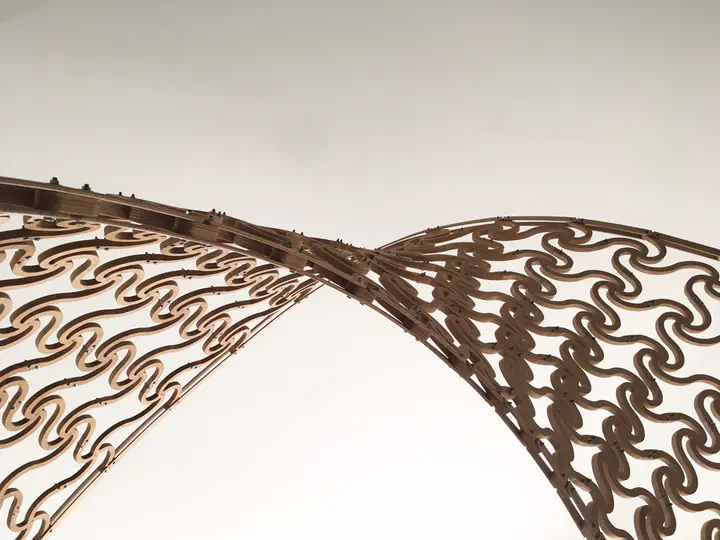A bending-active twisted-arch plywood structure: computational design and fabrication of the FlexMaps Pavilion

Abstract
Bending-active structures are able to efficiently produce complex curved shapes from flat panels. The desired deformation of the panels derives from the proper selection of their elastic properties. Optimized panels, called FlexMaps, are designed such that, once they are bent and assembled, the resulting static equilibrium configuration matches a desired input 3D shape. The FlexMaps elastic properties are controlled by locally varying spiraling geometric mesostructures, which are optimized in size and shape to match specific bending requests, namely the global curvature of the target shape. The design pipeline starts from a quad mesh representing the input 3D shape, which defines the edge size and the total amount of spirals: every quad will embed one spiral. Then, an optimization algorithm tunes the geometry of the spirals by using a simplified pre-computed rod model. This rod model is derived from a non-linear regression algorithm which approximates the non-linear behavior of solid FEM spiral models subject to hundreds of load combinations. This innovative pipeline has been applied to the project of a lightweight plywood pavilion named FlexMaps Pavilion, which is a single-layer piecewise twisted arch that fits a bounding box of 3.90x3.96x3.25 meters. This case study serves to test the applicability of this methodology at the architectural scale. The structure is validated via FE analyses and the fabrication of the full scale prototype. For more details on the prototype, please visit this webpage Our pavilion has been exhibited in the Italian pavilion of the 2021 17th Biennale Architettura in Venice